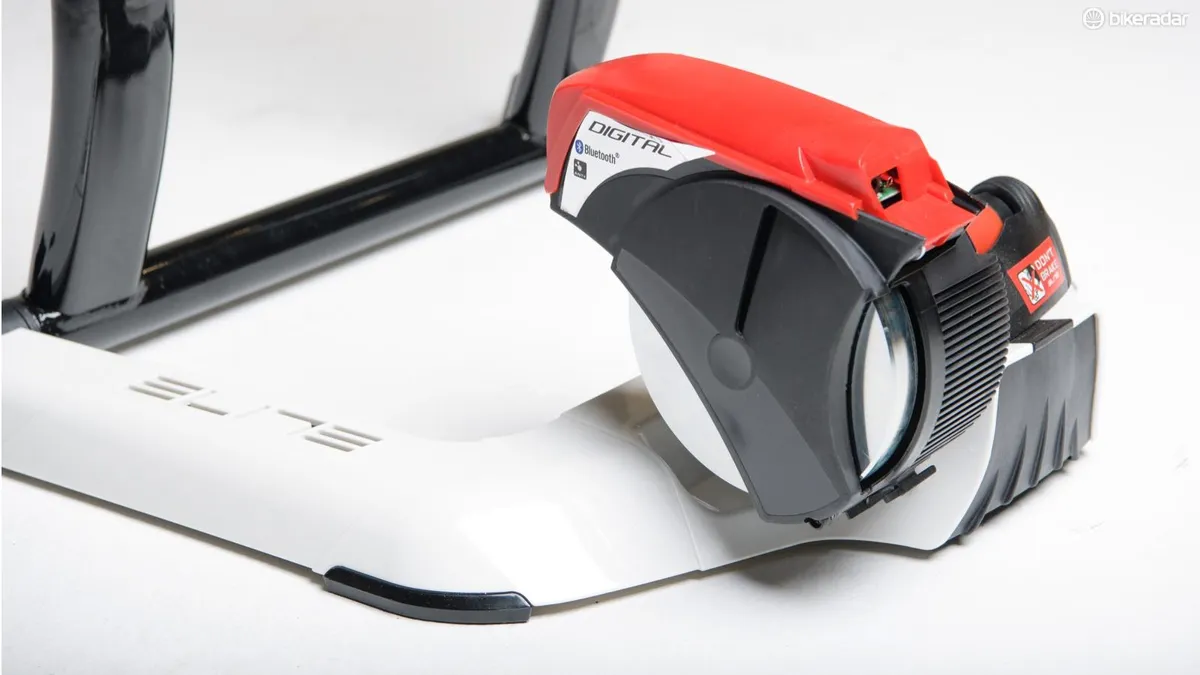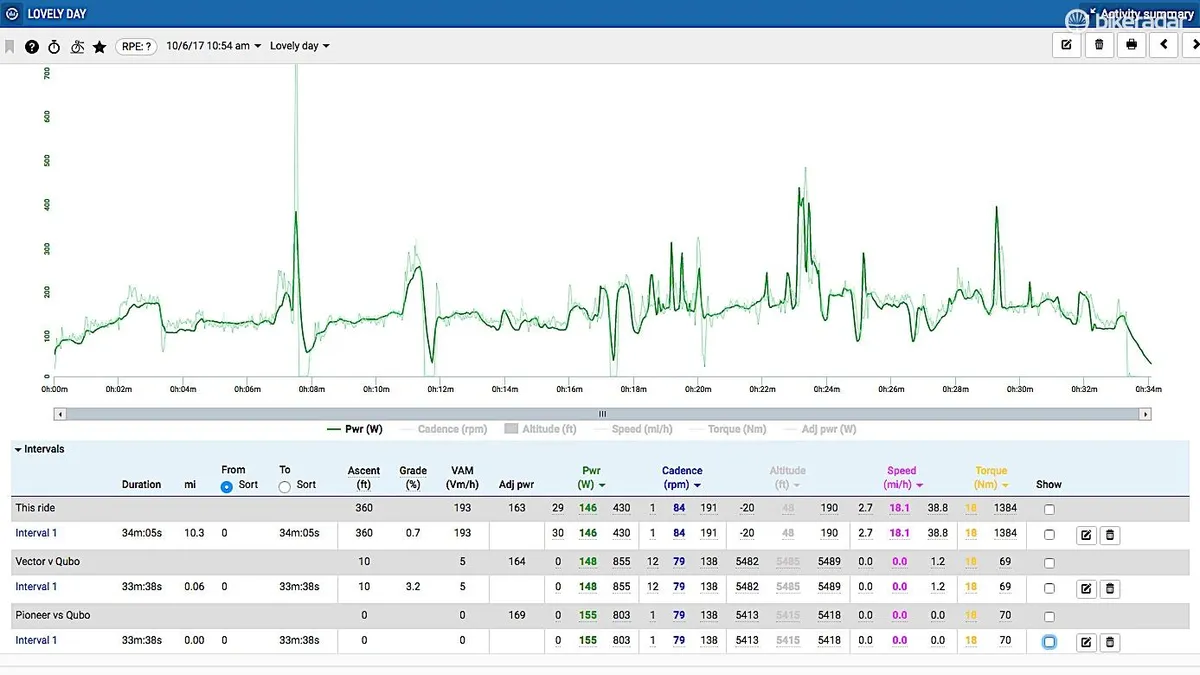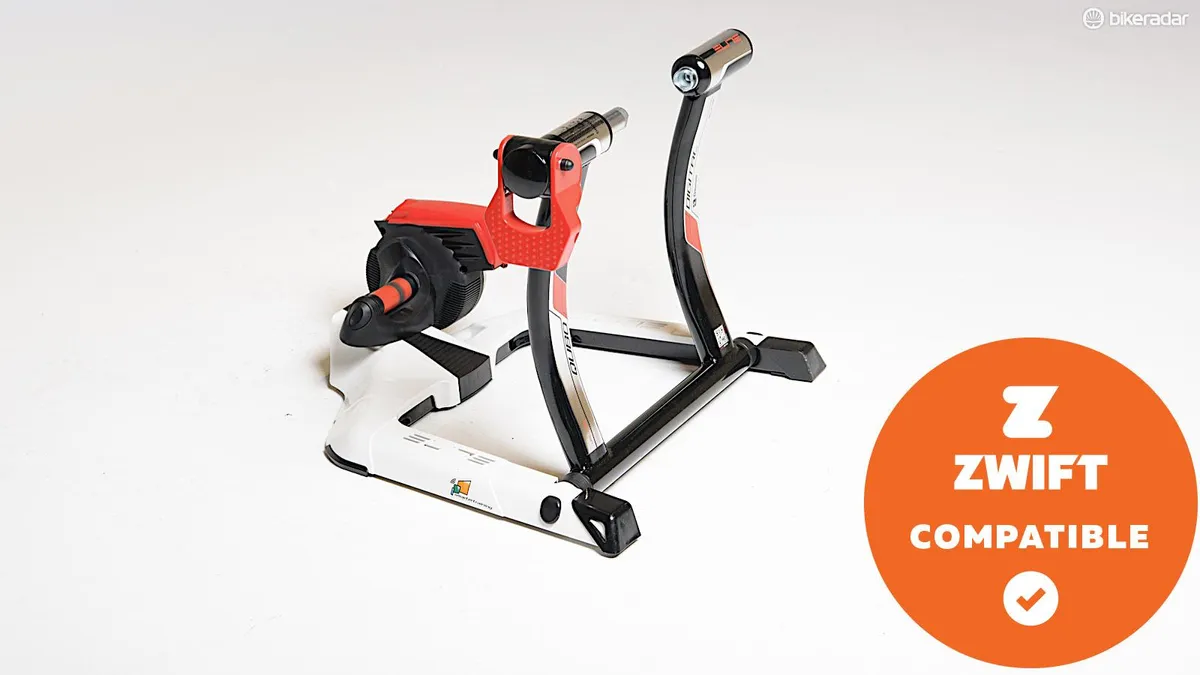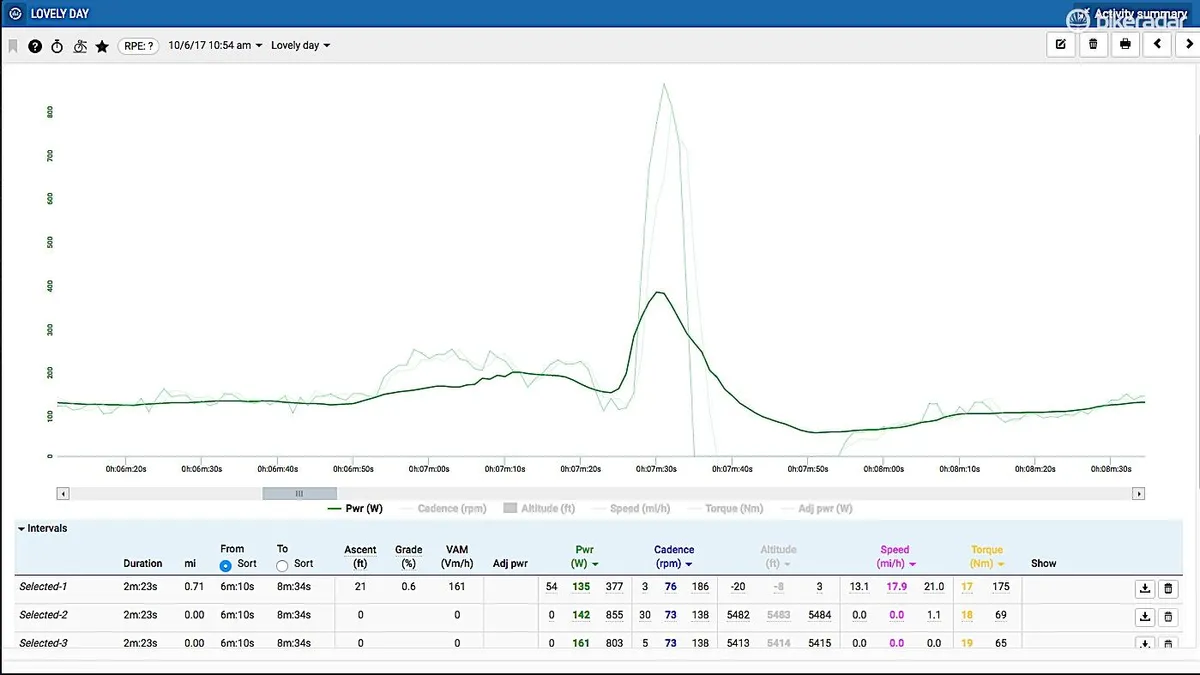Perhaps the best smart-trainer bargain, the Elite Qubo Digital Smart B+ delivers great value — and you can usually find it even lower than the list price on Wiggle and Performance.
Elite Qubo Digital Smart B+ overview
- Electric-motor resistance controlled by Zwift, TrainerRoad or other apps
- Can only do ANT+ or Bluetooth, but not both simultaneously
- Light and folds down
- Relies on rider weight for tire/roller contact
- Power measurement decent at steady state but poor during surges
- Noisy (80dB at 200w/80rpm; 91dB max)
Elite Qubo Digital Smart B+ set up and ride impressions
To use the Qubo, you just clamp your rear axle in and — after plugging in the trainer and pairing it to your favorite app — start pedaling.
Unlike most wheel-on trainers, the Qubo does not have any mechanics for securely tightening the roller against your rear tire. Instead, it relies on your bike and body weight for the connection.

For such a relatively light trainer with no screw-down tire connection, the Qubo is fairly stable to use when seated.
When you stand up, though, the pressure on the roller changes and so does the power measurement.
When seated and riding virtually in Zwift, the Qubo does a good job of quickly adjusting resistance to mimic hills and big drafts.
Without a large flywheel or sophisticated programming, the ride feel isn’t quite as good as a high-end trainer.
But — and this is the big but — the trainer costs a fraction of most other smart trainers. And as such, the Qubo is a good tool for the price.
Elite Qubo Digital Smart B+ power comparisons

I tested the Qubo and nine other smart trainers with pairs of power meters.
If you just look at average power for any given ride compared to power meters, the Qubo isn’t bad.
It doesn’t handle changes in pace or power very well, though, being very slow to respond to increases and decreases. Also, it reads high at lower power and low at high power.

Elite Qubo Digital Smart B+ ride impressions
The Qubo is light and super easy to set up.
It is the cheapest smart trainer out there. (Some non-interactive trainers are branded smart if they measure and transmit power data; I don’t count these.)
The main trade-offs for the great price are power accuracy and noise.
If you want to use a smart trainer for short interval training, I wouldn’t recommend this one. But if you want a smart trainer that delivers the virtual experience of changing resistance to mirror virtual undulations, the Qubo is a great value option.




